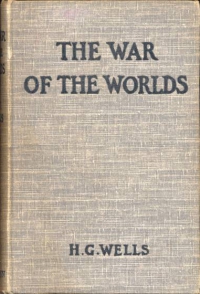The Island of Dr. Moreau by H.G. Wells
 Sunday, November 20, 2016 at 7:55AM
Sunday, November 20, 2016 at 7:55AM First published in 1896
The Island of Dr Moreau is H.G. Wells’ novel about a mad scientist who takes the idea of anthropomorphizing animals to an extreme. It is a horror story, but it explores a number of philosophical questions as the horror unfolds.
Edward Prendick, a biologist, is near death when he is rescued from a lifeboat after being forced to abandon ship. When he recovers his senses, he finds himself on a schooner with a drunken captain, a doctor named Montgomery, a deformed man who attends the doctor, a caged puma, and an angry pack of muzzled dogs.
Montgomery, having been booted out of medical school in London, is on his way to an isolated island. Through no fault of his own, Prendick is booted off the ship, leaving him with no choice but to join Montgomery on the island.
The island, of course, is home to the mysterious Dr. Moreau. It’s probably impossible to spoil a story this old, but I won’t say much more about the plot, except to note that Prendick encounters creatures who are “human in shape, and yet human beings with the strangest air about them of some familiar animal. Each of these creatures, despite its human form, its rag of clothing, and the rough humanity of its bodily form, had woven into it, into its movements, into the expression of its countenance, into its whole presence, some now irresistible suggestion of a hog, a swinish taint, the unmistakable mark of the beast.”
That quotation gives you a sense of Wells’ prose style which, to readers raised on genre authors who write eight word sentences and three sentence paragraphs, might seem laborious. Perhaps it is, but it is a style uniquely Wells’ own.
Prendick discovers that human-like beasts on the island are (rather reluctantly) following a set of laws. Transgressions are enforced by punishment that is “sharp and sure.” But, just as the promise of swift punishment does little to deter criminal behavior or misbehaving children, threatening to punish beasts who eat the flesh of other animals (or humans) isn’t likely to change their nature. And like all systems of punishment-based law, the system does no good if those who violate the law are not caught.
Philosophical questions that the novel raises include the difference between man and beast and the justice of a system that forces the island’s inhabitants to live in fear of laws they do not understand. The novel could be viewed as an allegory of legal systems and particularly of religious law, where obedience is coerced by instilling fear of punishment by a higher power. It can also be seen as an indictment of totalitarian government, where the “sayer of the law” uses ruthless tactics to dictate obedience among the masses, who are viewed as incapable of governing themselves (or whose self-governance is feared). And the novel can be seen as a caution against attempts to replace the natural with the unnatural, perhaps a forerunner of the debate about genetic engineering. On a simpler level, while the novel isn’t very frightening when viewed as a horror story, it is an entertaining tale, made all the more interesting by convincing characters, both man and beast (and in-between).
RECOMMENDED

